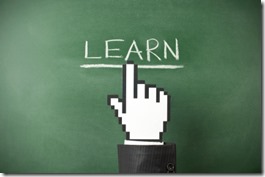 There has been much talk lately in educational circles – at least among the technologically-inclined – about “21st Century Skills.” Some schools have added courses, tweaked curriculum, and redoubled their technology efforts in an attempt to provide students with the skills necessary for success in the 21st Century. Sensing a shift in the ingredients for success for the next generation, these bold educators feel strongly that a correction in course for education is necessary as well. But what, exactly, does a 21st Century school look like?
There has been much talk lately in educational circles – at least among the technologically-inclined – about “21st Century Skills.” Some schools have added courses, tweaked curriculum, and redoubled their technology efforts in an attempt to provide students with the skills necessary for success in the 21st Century. Sensing a shift in the ingredients for success for the next generation, these bold educators feel strongly that a correction in course for education is necessary as well. But what, exactly, does a 21st Century school look like?
In envisioning such a school, many educational leaders and visionaries place a strong emphasis on 1:1 computing, one computing device per each child in school. EduSophia dedicated a entry to this topic shortly after our blog’s inception. Interest in 1:1 initiatives has not waned since that entry. In fact, in a recent opinion post published by the New York Times where educational experts were asked to envision the school of the future, you’ll find that many include the concept of a computing device per child. According to an article published by the Journal, a survey of attendees of a recent Technology + Learning conference indicated that 37% indicated that they had already launched a 1:1 initiative in their district. (Full results of the survey can be found here.) While this is certainly a notable adoption rate, it pales in comparison to the adoption rate of parents. According to a recent post by Nielsen, of those households who have a tablet and children under 12, 70% of those said that their kids use the device.
Much of this emphasis, at least in educational circles, has been connected with a shift to digital textbooks. In a recent New York Times article titled “Out With Textbooks, in With Laptops for an Indiana School District,” the author details the efforts of the Munster, Indiana school district. In one fail swoop, the district replaced its entire collection of paper-based textbooks with new digital alternatives, and then the district handed each student in grades 5 to 12 a laptop with which to access the new digital versions. According to proponents of such efforts, the digital versions are far cheaper to maintain and the laptops weigh much less in the students’ backpacks. While such efforts are intriguing in their potential benefits, South Korea, widely-recognized as a “wired” country, has scaled back plans for digital textbooks according to an article in The Washington Post. While still bullish on digital textbooks, the country has stepped back from a plan to make all textbooks digital by 2015, seemingly in response to concerns from parents.
More disconcerting should be the belief that laptops plus digital textbooks equals 21st Century skills. When reflecting upon technology in education, many speak of the difference between “transitional” versus “transformative” uses of technology. In the former, an instructor recreates his old transparencies in the form of slides to show on a projector. This use is transitional: the delivery medium has changed, but the concept remains the same. This is contrasted with a “transformative” use, where student achievement and learning are enhanced by completely changing the entire delivery concept. While some digital textbooks are certainly transformative with respect to their paper-based counterparts, the laptop-and-digital-textbook combination smacks of being merely transitional. More creative uses of the technology are possible. Consider, for example, Chicago Quest, a new charter school to open in Chicago this fall, that will reinvent teaching and learning by turning the concept of school into a large video game, according to an article published in the Chicago Tribune. (EduSophia has covered the topic of games in education previously in a separate blog entry.) While this is likely a delivery concept that would make many educators shudder, it is a nevertheless admirable attempt at a wider-scale technology shift that is certainly more transformative than it is transitional.
More importantly, it is part of a larger “reboot” of the concept of a school with an emphasis on preparing students for the world of which they are already a part. Examine the Framework of 21st Century Learning put forth by the Partnership for 21st Century Skills, the lead organization in advocating the shift to 21st Century skills. Technology is, arguably, at most only a third of those skills. Schools seem overly focused on preparing the students technologically, but equally important is preparing them with learning and innovation skills. While technology can enable us in our quest to learn more about the world around us, the world around us is far bigger than just technology.




